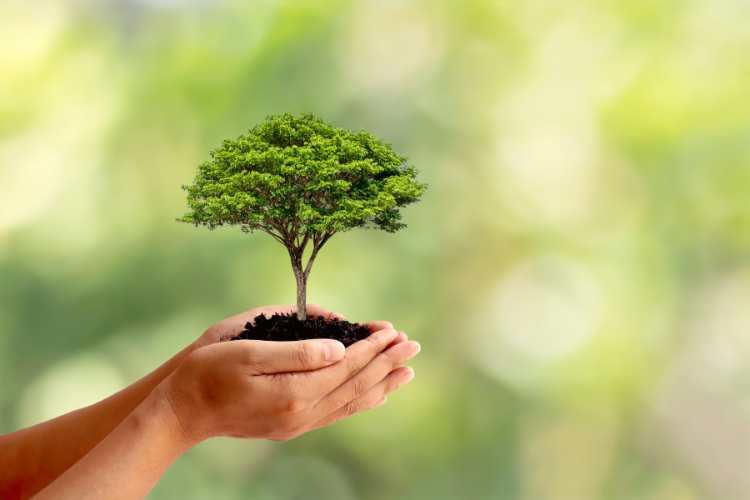What Are Dwarf Ornamental Trees?
4th Mar 2023
Small, straightforward to grow, easy to look after, and colourful. Who doesn’t enjoy dwarf ornamental trees? These stunning trees are so popular thanks to their unique shapes, colourful foliage, and eye-catching flowers.
On this page we’ll explore more about their popularity, which trees you should consider for your garden, and share a few tips on how to care for your new tree once you've planted it. But, for those who may not be familiar with these wonderful plants, let’s start with the basics.
What are dwarf ornamental trees?
To coin a well-used phrase - they are exactly what it says on the tin. They are small trees grown for their ornamental value (but can include fruit trees) but have all the beauty and interest of a full-sized tree. However, they are not necessarily grown on dwarf stock, think low growing trees that are deliberately kept small by pruning.
So, what's the difference between a dwarf tree and a regular tree? If you must put a definition on it, dwarf trees are usually a maximum height around 5 feet. Obviously, regular trees will grow much taller.
It is of course their size that makes dwarf ornamental trees perfect for any garden as they can be planted into even the smallest of gardens.
And if you’re interested in planting a tree there are so many to choose from. We’ll look at the different trees shortly but some of the most popular varieties include Japanese maples, flowering dogwoods, and dwarf fruit trees.
Why are they so popular?
We’ve already touched on this but apart from the obvious fact that they are just so eye-catching and attractive, there are plenty of other reasons gardeners love their dwarf ornamental trees.
First off, whether they are used as single specimens or in a group, they are a great way to add interest to any garden without taking up too much space. Use them to add structure to your planting scheme in a border or on a patio in pots. They also look amazing when used to line a garden path or driveway or to frame a view or front door.
Another major attraction is that they're low maintenance. Unlike larger trees that can quickly take over a space and need plenty of upkeep, dwarf trees can be pruned and cared for relatively easily.
Some of the best dwarf ornamental trees to plant
There are plenty of trees you can choose for your garden. Whether you’re looking for a matching pair to put in pots and frame the front door, or are looking to create a mini-orchard in a small plot next to the patio, you will find all the dwarf ornamental trees you need in our nursery. But here’s a few trees which you’ll find in many gardens around the country and all are hardy for the pesky UK climate.
Japanese maple: A personal favourite and I’m sure there are plenty of others who love these trees. A slow-growing tree with stunning foliage which can range from bright green to deep red.
Flowering dogwood: A beautiful tree which is a real showstopper. Especially in the spring, when it’s absolutely festooned in pink or white blossoms.
Dwarf fruit tree: Growing fruit trees used to be the exclusive reserve of those with a large garden and you’d see gnarled old apple or pear trees in the corner of the garden. But with dwarf trees everyone can enjoy growing their own fruit.
A neighbour of mine has eight dwarf fruit trees in pots and has made a lovely mini orchard despite having only a paved garden.
Crab apple: A real British favourite. I have one in both the front and back gardens. There are so many varieties to choose from and whilst not dwarf in the purest sense, they can be pruned to keep them small and manageable.
Magnolia: Magnolia can of course grow huge but there are dwarf varieties available which is wonderful news for those who love these plants but don’t have too much space. They are of course so popular because of the beautiful, colourful, and fragrant flowers they produce.
Dwarf flowering cherry: Such a beautiful tree when it's in bloom. And you’ll have enough fruit every year to make a cherry pie or two.
Where to grow your trees
The great thing about dwarf or small ornamental trees is that they are so versatile. You can literally plant them anywhere. In the border, in the middle of the garden as a focal point, or in a pot which can be placed anywhere.
Planting your tree in the ground enables it to establish a strong root system while its branches spread. The downside of course is that you can’t always find the sunny, sheltered spot it needs. And once planted that tree isn’t moving.
On the other hand, planting your tree in a pot gives you more control over its growth and you can move it around whenever and to wherever you like. But potting a tree can make it more prone to drying out so you do need to keep on top of the watering.
So, plant in the ground or in a pot? You pay your money and you take your choice but the main attraction of dwarf ornamental trees is the space they save so they are ideal for planting in containers.
Maintaining and caring for your trees
Choosing and planting your tree is great fun, but then the hard work begins in caring and maintaining it.
Water regularly: As amazing as it sounds, we can’t always depend on the British weather to provide the rain we need to keep our trees well-watered. It’s essential you keep the tree watered especially during the hot, dry weather we sometimes get. If your tree is in a pot regularly check the soil to ensure it doesn’t dry out.
Prune reggularly: Pruning not only keeps your tree manageable and looking neat and tidy but also helps to keep it as healthy as possible.
Fertilise occasionally: We don’t all fertilise our trees but treating it once or twice a year will help keep it strong and healthy.
Protect from pests: Not always easy of course and pests are very well named. Regularly checking will make sure you catch any problems early and you can treat the issue as and when you need to. Keep an eye out for aphids, spider mites, and fungal diseases.
Thankfully dwarf ornamental trees don’t take too much looking after and we wouldn’t be gardeners if we didn’t enjoy caring for our plants and trees. Treat yourself to a tree or two and brighten up that forgotten spot in the garden or brighten up the patio.


